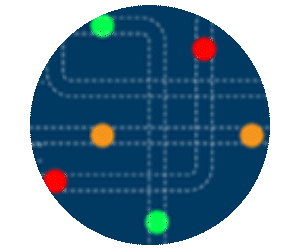Nashville, Tenn., might be known for pioneering country music, but it’s also become a leader in a different type of orchestration: using artificial intelligence to improve citizens’ lives.
Last fall, Vanderbilt University, the Tennessee Department of Transportation and others formed the CIRCLES Consortium, using AI and deep learning to improve traffic flow within the rapidly congested city. Over 2,500 hours, 100 AI-equipped vehicles assessed traffic patterns, fuel economy, air quality and more on stretches of Interstate 24, one of many examples of state and local governments leveraging AI to deliver better experiences.
But as agencies continue investing in AI, machine learning, automation and related technologies, they must ensure their back-end systems also operate efficiently, intelligently and correctly. That’s where observability and AI for IT operations (AIOps) come in.
Click the banner below for more content on how IT modernization improves citizen services.
Gain Complete Visibility into Technology Stacks
The more powerful and ambitious an AI project becomes, the more likely it is to involve a highly complicated technology stack. Those stacks often include myriad applications and tools, each highly dependent on others and spread across on-premises, hybrid and multicloud environments.
When something breaks, it can take significant time to find the root of the problem. Extended downtime and errors can result in faulty intelligence or worse: a complete failure of an AI solution that a community depends on.
Gaining unfettered observability into all of the applications that make up a network, regardless of where they are located, can minimize this risk. Unlike traditional monitoring, which is reactive, observability allows IT managers to proactively visualize everything taking place across the network, including across different cloud environments.
DISCOVER: The current landscape for AI in state and local government.
Observability considers all application dependencies, helping teams better understand how an anomaly or defect in one app could affect another. This is especially important when managing complex, highly connected environments designed to quickly ingest and analyze data and deliver actionable results in real time.
Imagine the chain reaction within a smart city infrastructure resulting from a single failure deep in some connected sensor somewhere along the grid. Observability provides teams the visibility they need to quickly identify the failure, trace its impact on the rest of the system and rectify any issues.
Fix Faults with Intelligent and Automated Solutions
AIOps is the practice of using disparate data sets to identify, respond to and remediate problems. Combined with observability, it creates a powerful tool for ensuring the continued efficacy of AI-driven networks.
AIOps combines AI, machine learning, natural language processing and historical data to identify issues quickly and precisely. With this intelligence, the AIOps system can either automatically remediate potential problems or, in the case of more complex challenges, provide IT managers with detailed and actionable recommendations on how to fix the fault.
While equipping a system with both observability and AIOps significantly reduces the time spent on fixing errors, it can also alert administrators to problems they otherwise may not have known existed. This is critical for maintaining a properly functioning and effective AI network.
A smart city network, for instance, may include thousands of sensors working simultaneously, passing data to and from public or private clouds (or a combination of both) and relaying information to applications. Bugs can easily go undetected in this thicket of technology. An observable, AIOps-based system can proactively seek out those bugs before they lead to larger problems or even a complete outage.
As state and local governments increase their reliance on AI to deliver exceptional citizen services, they need to make sure their back-end monitoring is appropriately advanced to support their efforts. Observability and AIOps provide greater visibility into network operations, resulting in a highly advanced, intelligent and automated combination that should be music to any IT administrator’s ears.












